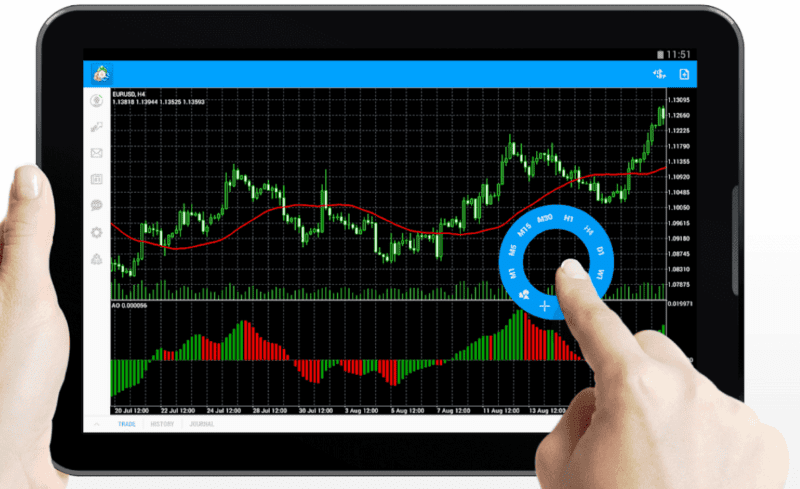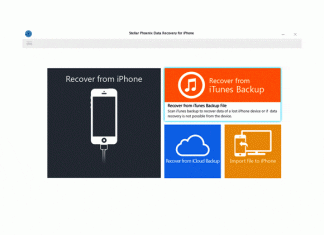The situation in 2020 has spurred the development of all virtual services, especially financial services. All major brokers have acquired their mobile apps based on major operating systems. Investment professionals note that the financial literacy of passive investors has increased dramatically over the past few years, and a quality stock investment app should promptly respond to current customer requests.
Selecting an App
A novice investor, let alone an experienced financial player, wants to have in their pocket, if not a full-fledged trading terminal, then at least a smartphone that has a stock investment app with full functionality and a straightforward interface. When choosing an app for stock trading, the main factors to consider are:
- The variety of securities represented.
- The service’s ease of use for the inexperienced investor.
- The service is informative.
- Proper functionality of the app.
You should be aware that it is impossible to find an investment app that suits absolutely everyone. Each participant in the investment process has their requirements. For example, some of them care about the simplicity of selecting an investment instrument and the ease of making a deal to buy and sell shares.
Others prefer functionality, i.e., graphic tools and the ability to use various options. Analytical reports, forecasts, informative stock charts, and comprehensive information on dividends and coupons are crucial for a beginning interactive broker.
In addition to these factors, clients are interested in the security of the service, honesty in payments, prompt round-the-clock support, the correct program for buying stocks and working stably and quickly. As a result, the number of downloads of stock trading apps is increasing with the growing interest in investing in securities and has already reached tens of millions.
There are many offers with the most attractive conditions, but these services are owned by little-known companies that are not significant and long-standing players in the securities market. Banking specialists advise choosing mobile apps of large legal brokers for complete financial security and confidentiality.
It is a guarantee that all the presented information will be correct and up-to-date, and the data of the exchange player will not get into the database of small financial offices with annoying and incorrect managers.
Stages of Trading App Development
To create trading apps, you have to divide the process into stages. Each stage has its functions and a clear output result. There are seven sets, from pre-development analytics to post-publication technical support. First, let’s discuss how to build a stock trading app.
Analytics
At this stage, developers analyze business processes, detail functional requirements, and think through user stories in the app. Finally, they draw up a term of reference with a detailed description of how the mobile app will work.
In Terms of Reference
The quality and completeness of the terms of reference guarantee the teamwork of developers and analysts. They form clear goals and objectives based on the information provided by the customer. Developers begin implementing the TOR after it has been approved.
Such a document should necessarily include a description of how to integrate the software with other services, general project data, a description of the future software screens, the requirements for the implementation of the app, a description of the technologies used in the phase of creating the trading app, and non-functional and functional requirements.
Prototyping
Developers work out user scenarios and visualize the overall structure of the mobile app based on the terms of reference. Think through the logic of transitions between screens. Create trading apps with a conceptual model describing screens and elements. Work on objects: describe their attributes and relations between them. Creating a design concept for the app and creating an interactive prototype showing the visual image of the app and its functionality.
Design
Developers adopt the client’s corporate style to the platform’s guidelines. Next, they select a manner that meets the customer’s objectives, credibility, and image. Next, they create a trading app concept and develop the design. Next, think through and render the state of the screens, design elements, and the welcome screen. Finally, prepare the necessary graphic material — icons, illustrations, photos.
Development
Developers create trading apps quickly because they use proven solutions and a set of libraries that they build and maintain themselves. They write clean and stable code in Swift, Objective-C, Java, and Kotlin. Test apps with Unit and UI tests. Create trading apps custom UI components that make the interface unique. Use modern approaches and automated processes, CI/CD to create trading apps.
Testing
The developers control the quality at all stages of product development. They conduct testing on real devices in parallel with the created trading app. Write UI autotests. Prepare test documentation — create trading apps checklists and test cases. Providing high-quality work for the apps — finding bottlenecks in implementation and processes that can cause users problems.
Publishing
Developers prepare the app for publishing. Assist registration in storerooms and submit completed app forms to Apple and Google. Prepare descriptions, text, and screenshots.
Technical Support
The company developer ensures that the apps function correctly in the post-warranty service. The specialists optimize mobile products for iOS and Android updates and new devices. Create trading apps functionality according to the customer’s requirements.
Additional Difficulties in App Development
They created a trading app based on a particular goal. The functionality, type of app, and stages of developing a trading app will depend on this. Likewise, the choice of mobile software will depend on the purpose the company prefers.
Types of Mobile Software:
- It makes maximum use of the available resources of the smartphone’s operating system — accelerometer, camera, contact list, GPS sensor, compass, etc. At the same time, it works quickly and offers the user more diverse functionality. There are no performance problems. It is considered a resource-intensive mobile service. Launchable via the icon in the “Menu” tab.
- Symbiosis of web and native software implemented as a platform-independent page with a layout (hosted on the server). You can update this software without releasing a new version. It is well-framed with push notifications, which simplify using the app.
- Web view. This kind of software allows you to get instant profits with minimal costs. It completely repeats the interface and functionality of the usual desktop site.
The programming language of the mobile service also depends on the purpose of the project. Modern developers know several languages for writing software — Kotlin, Java, Swift, C-Sharp, Dart, JavaScript, C-C++, Flutter, etc. Not every language is suitable for a particular task, and we always tell the customer about this at the initial stage and give recommendations. Based on the target, it’s easy to calculate the return on investment you spent to create trading apps based on the target.














